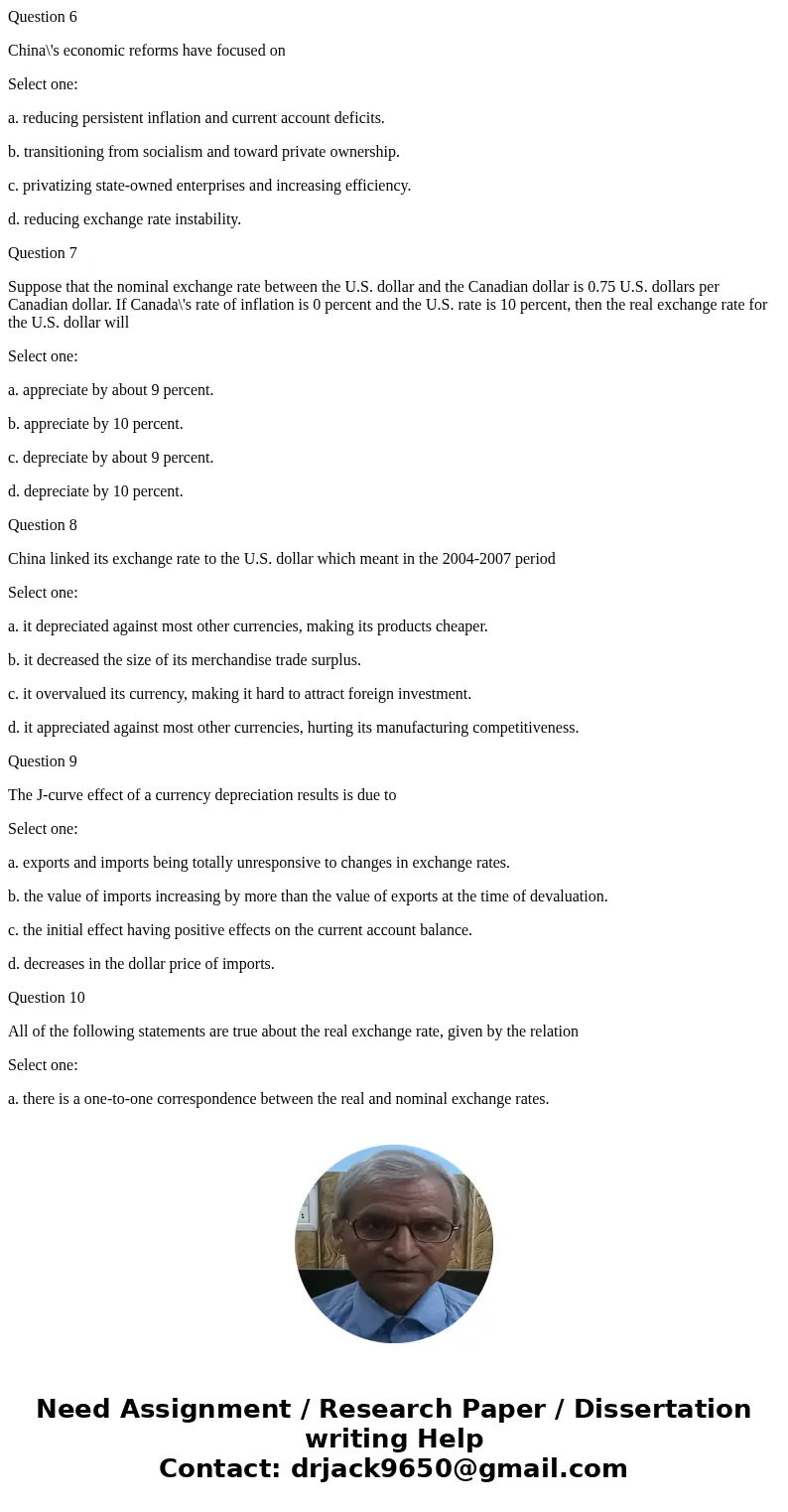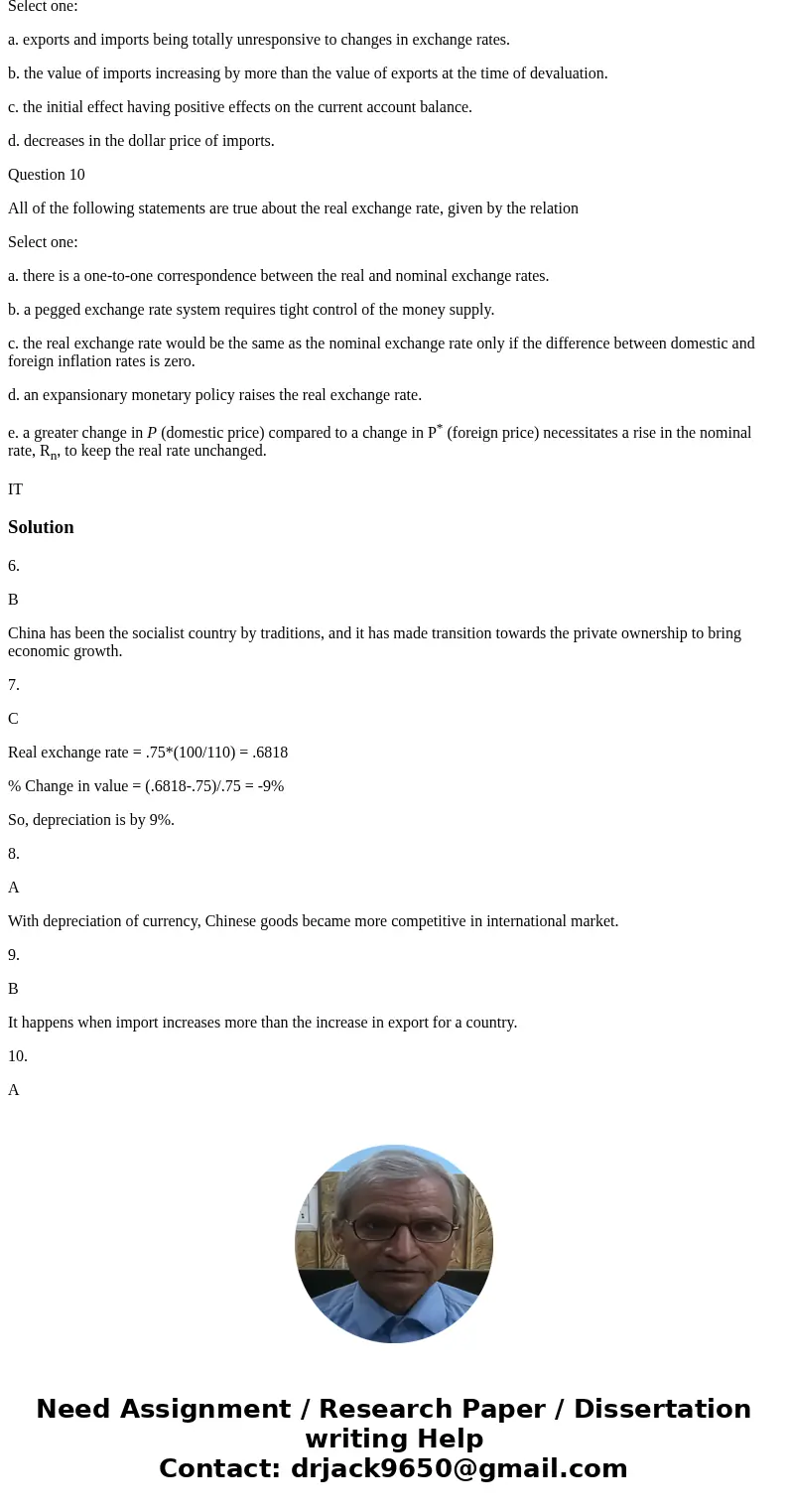Question 6 Chinas economic reforms have focused on Select on
Question 6
China\'s economic reforms have focused on
Select one:
a. reducing persistent inflation and current account deficits.
b. transitioning from socialism and toward private ownership.
c. privatizing state-owned enterprises and increasing efficiency.
d. reducing exchange rate instability.
Question 7
Suppose that the nominal exchange rate between the U.S. dollar and the Canadian dollar is 0.75 U.S. dollars per Canadian dollar. If Canada\'s rate of inflation is 0 percent and the U.S. rate is 10 percent, then the real exchange rate for the U.S. dollar will
Select one:
a. appreciate by about 9 percent.
b. appreciate by 10 percent.
c. depreciate by about 9 percent.
d. depreciate by 10 percent.
Question 8
China linked its exchange rate to the U.S. dollar which meant in the 2004-2007 period
Select one:
a. it depreciated against most other currencies, making its products cheaper.
b. it decreased the size of its merchandise trade surplus.
c. it overvalued its currency, making it hard to attract foreign investment.
d. it appreciated against most other currencies, hurting its manufacturing competitiveness.
Question 9
The J-curve effect of a currency depreciation results is due to
Select one:
a. exports and imports being totally unresponsive to changes in exchange rates.
b. the value of imports increasing by more than the value of exports at the time of devaluation.
c. the initial effect having positive effects on the current account balance.
d. decreases in the dollar price of imports.
Question 10
All of the following statements are true about the real exchange rate, given by the relation
Select one:
a. there is a one-to-one correspondence between the real and nominal exchange rates.
b. a pegged exchange rate system requires tight control of the money supply.
c. the real exchange rate would be the same as the nominal exchange rate only if the difference between domestic and foreign inflation rates is zero.
d. an expansionary monetary policy raises the real exchange rate.
e. a greater change in P (domestic price) compared to a change in P* (foreign price) necessitates a rise in the nominal rate, Rn, to keep the real rate unchanged.
ITSolution
6.
B
China has been the socialist country by traditions, and it has made transition towards the private ownership to bring economic growth.
7.
C
Real exchange rate = .75*(100/110) = .6818
% Change in value = (.6818-.75)/.75 = -9%
So, depreciation is by 9%.
8.
A
With depreciation of currency, Chinese goods became more competitive in international market.
9.
B
It happens when import increases more than the increase in export for a country.
10.
A


 Homework Sourse
Homework Sourse